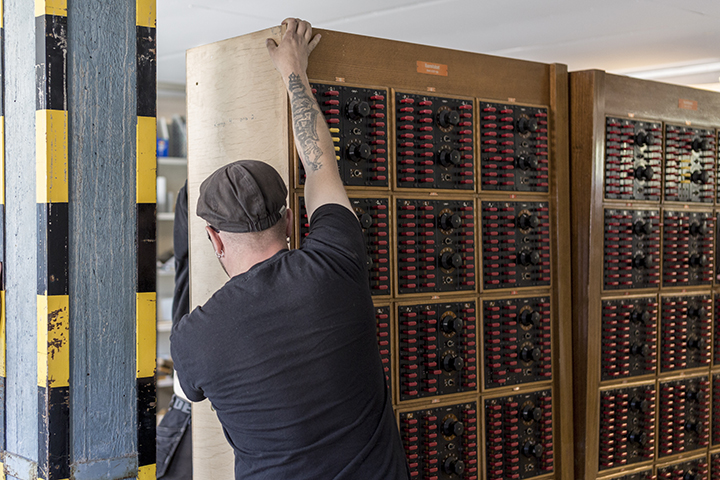A new permanent exhibition called Land of Technology is the result of collaboration between the Museum of Technology and 11 Finnish industrial companies. The exhibition will open this autumn and remain on display for the next 10 years. Land of Technology tells the story of Finnish industry.

Part of the exhibition consists of objects from the main grid collection, which have been permanently moved to the Museum of Technology from the former Elektra electricity museum collections. Elektra opened in 1999, and the decision to close it was made in 2015.
“We wanted to move the Elektra electricity museum to Hämeenlinna Historical Museum in 2013, but the National Board of Antiquities didn’t approve the lease agreement. The earlier location was difficult, and Elektra’s main funder Fingrid and the Elektra Heritage Association decided to close the museum. Fortunately, a large number of the objects were accepted for Museum of Technology collections and we were able to keep the most valuable parts of the collection together,” says Safety Manager Pekka Niemi from Fingrid. He chairs the Elektra Heritage Association.
Some objects went to other museums. The Museum of Technology’s collection manager Kirsi Ojala says that the devices from Elektra are well suited for a museum specialising in technology.
“Finnish electrical technology is an important part of the Museum of Technology collections. Special tools used by industrial professionals were moved here from Elektra. Many of them would be quite mysterious without expert sources of information. That’s why it’s so important that we received a complete entity accompanied by excellent information. Background information is what brings objects to life in a museum,” explains Ojala.
Grid model is part of the exhibition

Built in 1957, the main grid model is the jewel of the Elektra collections. It’s a miniature model of Finland’s main grid and a key element of main grid planning. It was used to model changes made to the main grid until the end of the 1970s, including the calculation of fault-currents in the main grid. It’s an analogue computer, one of the first of its time.
“The grid models or grid maps were completely functional at Elektra. Some parts of the model have been removed from the Museum of Technology exhibition, but the essential elements are still there. The device is made up of several wooden cabinets and takes up about 40 m2 of space when set up. To my knowledge, no other place in the world has saved a similar grid model,” says Niemi.
The other objects include tools that were used to build transmission lines.
“Some of the tools made specifically for this work were special ladders, insulating rods and pliers for tower work. The collection also contains various communications devices that preceded mobile speech messaging,” explains Niemi.
The grid model fits in well with the new Land of Technology permanent exhibition.
“The grid model complements the collection, which describes the history of information technology development. It’s also related to the history of automation The Elektra collection included a set of approximately 1,500 photos, some of which have been digitalised. The digitalised photos are still available for us to use. Our exhibition is a reminder that today’s technology is based on existing know-how rather than being created from nothing,” says Ojala.

The objects are in good condition
The objects have been stored in a professional museum manner at Elektra. The unavoidable effects of time are being repaired by Conservator Anna Lehtinen from Konservointipalvelu Löytö Oy.
“The grid model contains a lot of different materials and the parts are dirty. The cover panels and other wooden parts have warped and they no longer fit perfectly in place. The ‘chalkboard’ in the background has also shrunk a lot, and cleaning and reattaching it will be the most challenging part of the project,” says Lehtinen.
Various types of damage caused by use can be seen, and we’ll repair the most obvious of these.
“We’re going to fix what’s broken and check all the metal parts for corrosion. The surfaces will be cleaned on a material-specific basis, which will make the details easier to see,” continues Lehtinen.
Pekka Niemi considers the Museum of Technology a good location for the main grid collection
“Elektra had up to 3,000 museum visitors each year, which was very good for a special museum. But the Museum of Technology has about 35,000 visitors per year, which will give even more people a chance to see the collection,” states Niemi.
Old photos of the main grid: museot.finna.fi/ -> Search term: grid model
The Yhteisillä linjoilla book published in 2005 describes the phases of the main grid and main grid model.






